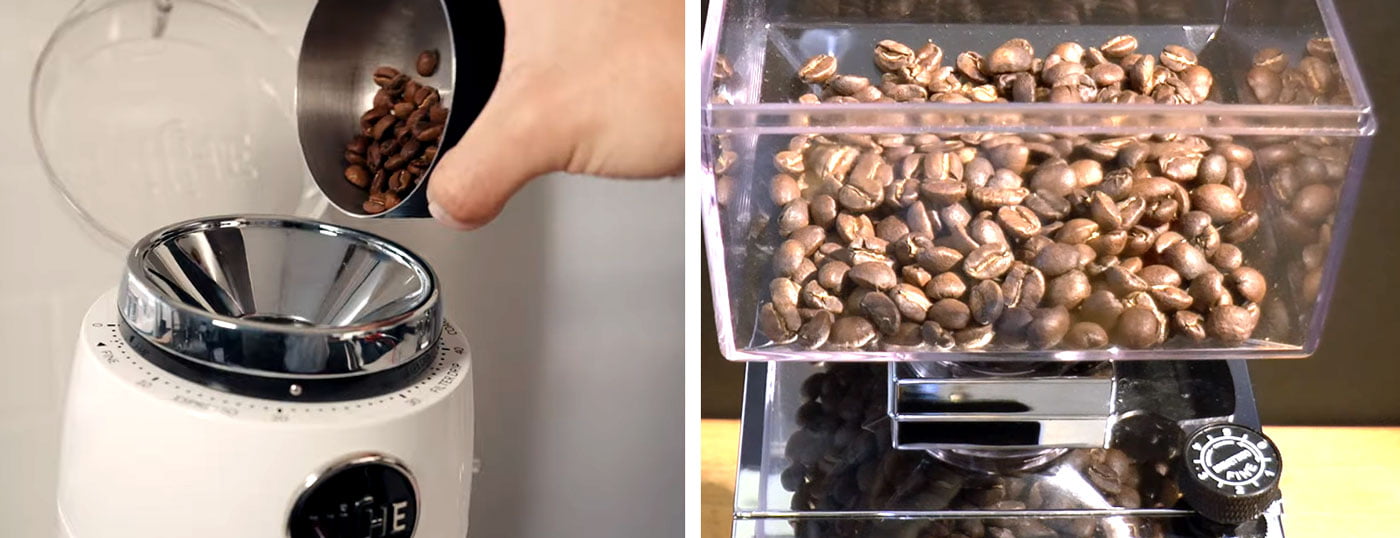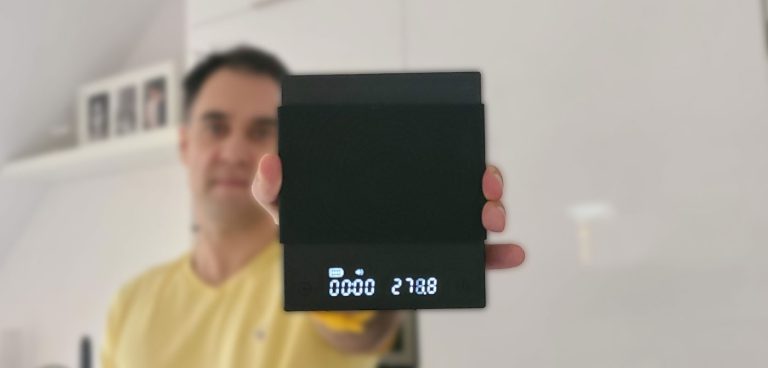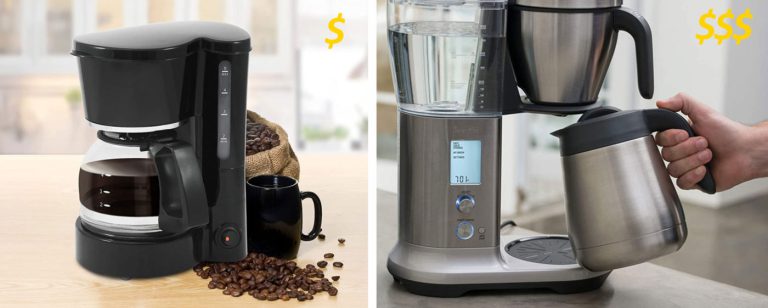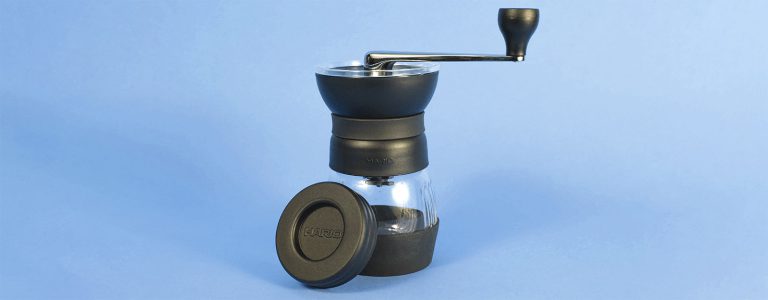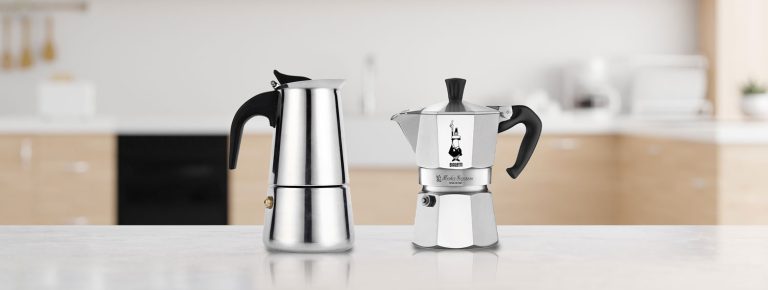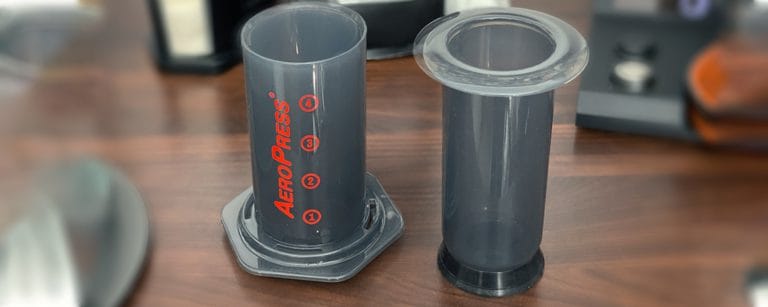Single Dose Grinder vs Hopper Grinder: Find The Right Grind for Your Coffee
In your search for the ideal coffee grinder, you probably stumbled upon the single-dose grinder and hopper grinder.
But what’s the difference and who are they best for?
Let me lay down the facts in this comprehensive guide on both types. I’ll discuss their features, pros, and cons to help you choose what fits your brews.
Single Dose Grinders
A single dose grinder doesn’t have a hopper where you can store your beans. Instead, you measure the exact amount of beans that you need and grind them directly with your machine.
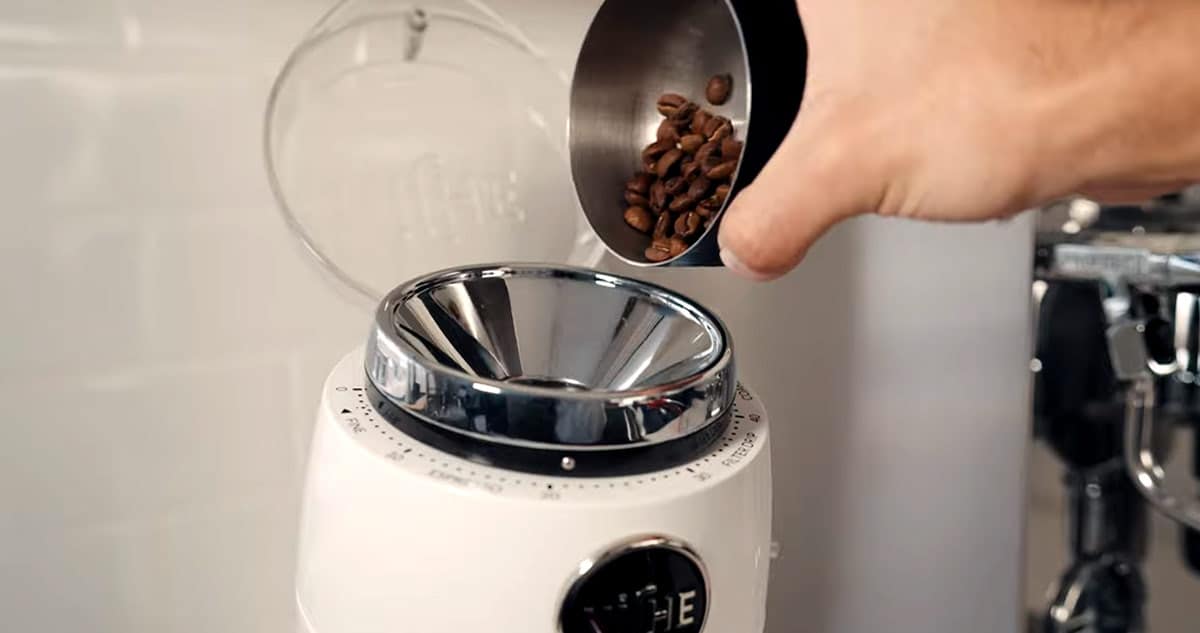
Pros
Cons
Single dosing is pretty easy:
- Using a scale, measure your beans.
- Load them into the grinder’s chamber or hopper. Do not overload to avoid clogging.
- Adjust the device to your preferred grind size.
- Align the grounds catcher cup or the espresso portafilter under the chute. I’ve found grinding directly into the portafilter can get messy, with some machines though, so the cup is a good option.
- Press the grind button and wait for your coffee grounds to come out.
- Blow air through the chute with a bellow (if the grinder has one), to get all of the coffee particles through.
To be on the safe side, measure your grounds again after grinding. As I mentioned, some single-dose grinders can be a bit messy so the final yield is a tad lighter.
Benefits of a single-dose grinder
Now I’ll walk you through the benefits of using a single-dose grinder:
- Freshness: Since you only take out your beans right before brewing, expect peak freshness in your coffee.
- Control: Since you dose your beans every time you brew, you have more control over the measurements of your grinds.
- Bean versatility: If you’re like me who loves to explore different blends and varieties of beans, I say go for single-dose grinders. You can choose your beans every time, unlike hoppers that limit your choice.
- Less waste: The potential waste is also minimized here. Because you only grind what you need, there are no leftover beans that can go stale – a common issue with hopper grinders.
Drawbacks of a single dose grinder
Certain limits can also pop up with a single-dose grinder:
- Grinding larger batches takes more time – The need to measure beans for each individual brew increases the total brewing time. This is especially apparent when preparing big batches of brews.
- No storage for coffee beans – Since there’s no hopper on this grinder, a separate container for your beans is necessary. Compared to hopper grinders that store beans internally, it’s less convenient.
Hopper Grinders
Hopper grinders feature built-in hoppers for storing beans. They grind exactly the amount you need per cup and can handle larger batches all at once.
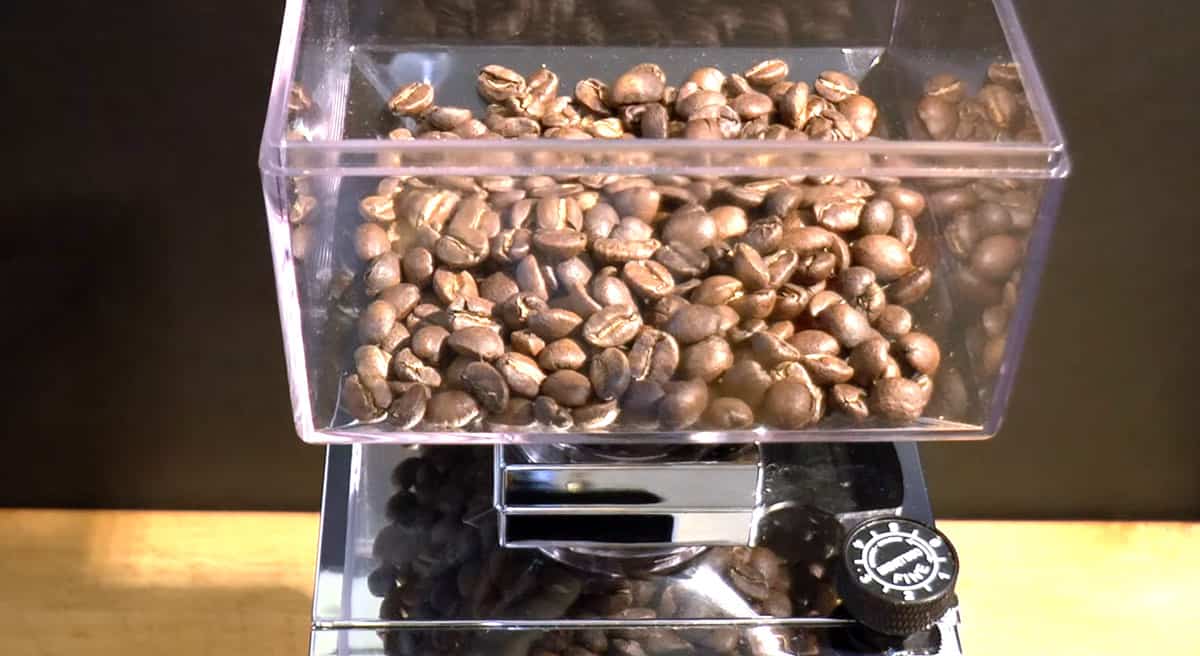
Pros
Cons
Here are the steps on how to use a hopper grinder:
- Fill the hopper with beans. No measuring is needed here because the machine does that for you.
- Adjust the settings to your desired grind size and dose.
- Position your portafilter or container under the chute.
- Press the grind button and wait for your coffee grounds to come out.
Benefits of a hopper grinder
Here are reasons why it’s nice to have a hopper grinder over its single-dose counterpart:
- Speed & convenience – Having a hopper automates measuring your needed amount of coffee grounds, making the process faster and more convenient. This varies by grinder. Some grinders have time-based cut-offs, but the advanced ones have built-in scales.
- Grind more at once – Unlike the limited amount of beans you can grind in one go with the single-dose grinder, the hopper grinder can pump out ground coffee for larger batches with just a push of a button.
- Versatility – Since these grinders are built with high-volume grinding in mind, their power and parts are generally better for versatility, allowing you to grind for different methods from espresso to the French press.
Drawbacks of a hopper grinder
Now let me discuss the caveats of choosing this type of grinder:
- Wasted beans – If you’re not able to use up all of the beans in your hopper before they go stale, you either have to drink a disappointing cup of joe or just throw them out, leading to wasted coffee.
- Limited bean variety – When switching between blends and origins for your coffee, you need to use up all of the beans stored in the hopper. This is inconvenient if you like to experiment with your brews.
Hopper to Single-Dose Conversion
Not many people know that some hopper-style grinders can be converted to be used as a single dose grinder. This is especially popular for Breville grinders, but many other brands can be converted as well.
You need to get aftermarket single-dose accessories for your given grinder, which usually consists of:
- anti-popcorning plate so the beans don’t jump around when grinder
- silicone below to blow the grinds through the grinder
This is an interesting topic, so I’ll write a detailed article about it in the future.
Single Dose Grinder vs Hopper Grinder: An In-Depth Comparison
Now I want to talk about the differences between these two types of grinders, so you can get a feel for which might be a better fit.
Flavor Quality
By grinding only the amount of coffee needed for each serving, single-dose grinders ensure that every cup is brewed with freshly ground beans, offering unparalleled aromas and flavor profiles. So as long as you store your coffee properly, the grinds will be as fresh as possible.
Meanwhile, hopper grinders can still produce high-quality flavors when used properly. But since they require larger batches of beans to be stored in the hopper, there’s a chance that freshness will be compromised. The lid of the hopper usually seals well, but air gets into the hopper through the bottom, where the burrs are.
Now at a cafe, where you’re constantly grinding, it’s not an issue. But at home if you only make 1 coffee a day, it might be.
By the way, one of the first things they taught us about closing a café for the night at barista school was that you need to empty the hopper and store the beans properly at night, not in the hopper.
As for the consistency of the grinds, I find that both grinders can provide a consistent grind size if you’re using a good-quality model for each.
Speed & Convenience
Hopper grinders win this aspect as they remove the additional step of having to get your coffee from the storage container and measuring them.
Aside from the faster individual grinds, larger batches are also quicker and more convenient to grind, making this the perfect choice for households and offices with multiple coffee drinkers.
If you don’t consume coffee too frequently though, I’d say a single-dose grinder is quite practical.
Waste Considerations
Single dose grinders are the better choice if you’re mindful about the footprint of your coffee. Your coffee grounds already produce too much waste after brewing (so be sure to recycle your used coffee grounds), but it’s even more of a waste if your pristine beans just go stale in the hopper, and you end up throwing them out.
Flexibility
You can’t try out new coffee beans unless you’ve emptied the hopper. This means that the single dose grinder is more flexible when it’s about exploring varieties and blends of beans.
Cost
Single dose grinders often come at higher price points because they focus on quality rather than quantity. While pricier, the freshness and consistency can prove worth it in the long run.
Hopper grinders are generally more affordable, but they can incur more expenses from wasted beans or burr replacements due to increased wear after frequent usage.
My Recommended Grinders
Here are 2 grinders I have no problems recommending.
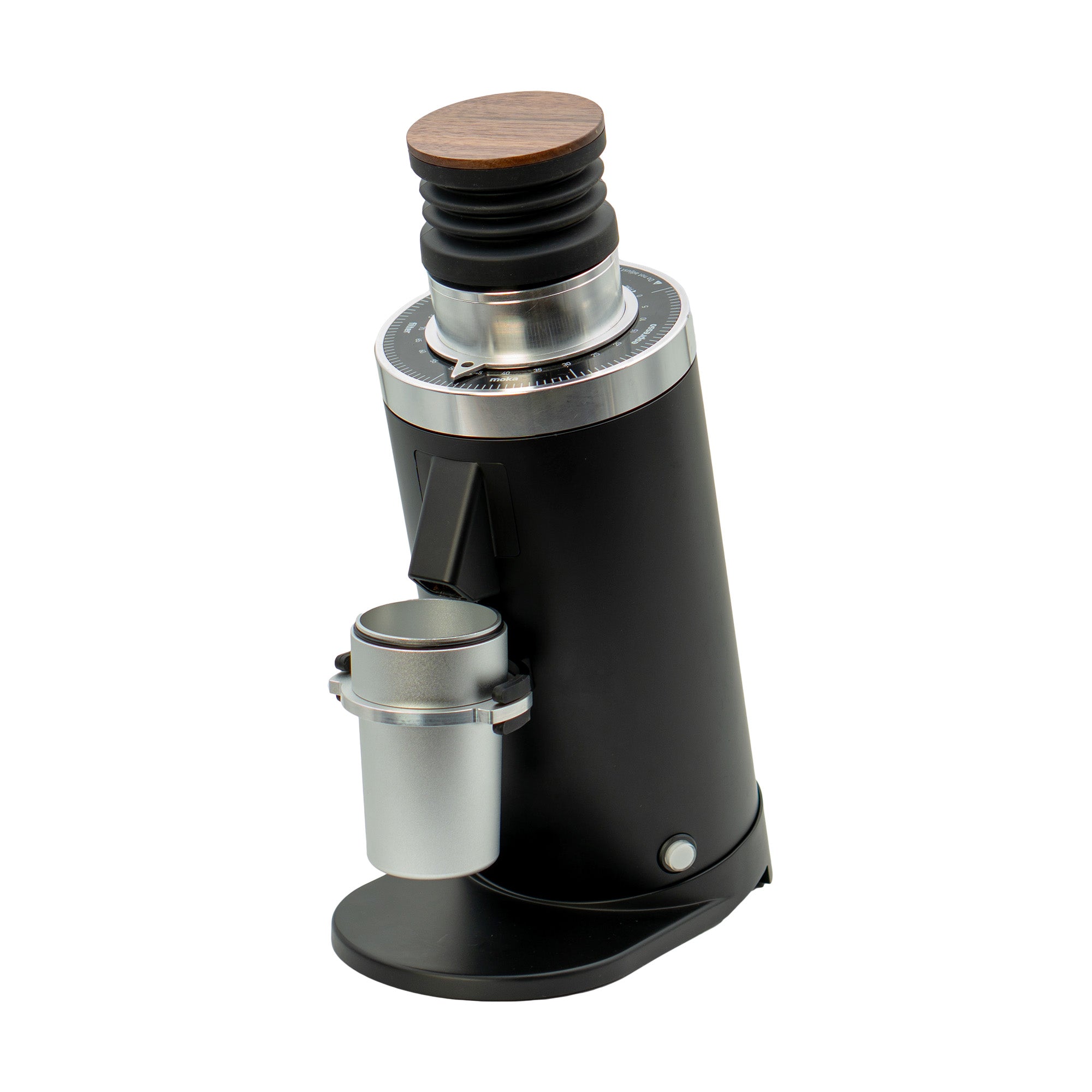
- 64mm burrs
- plasma generator
- steples adjustment

- Espresso and other brews
- 8 oz hopper
- 4mm conical burrs
Frequently Asked Questions (FAQs)
Here are answers to some of the questions you may have about these grinders:
It depends on your preference. For home baristas, single dosing allows you to switch between coffee bean varieties but if you’re brewing in a commercial setting like a cafe, you’ll benefit from the convenience of a hopper grinder.
Because most hopper grinders are designed for grinding larger batches quickly, it’s generally faster. Imagine having to measure your coffee beans for each individual cup, it’s not that ideal.
Single dosing only means that you have to grind coffee beans per serving without the convenience of a hopper built into the machine, therefore manual grinders also fall under this category.
You can check out my list of the best manual coffee grinders this 2025 if you’re considering buying a hand grinder.
Which should you choose?
Both the single dose and hopper grinders have their own perks and downsides. Single dosing, while more expensive, gives you flexibility in your beans, ensures their freshness, and will not waste your coffee beans. Meanwhile, hopper grinders are faster and more convenient, but they limit your choice of beans.
I own both. I mainly use my single-dose grinder when making coffee for myself since I love experimenting with different coffee beans, but I’ll just fill the hopper grinder when guests come, which make serving coffee a bit faster.

